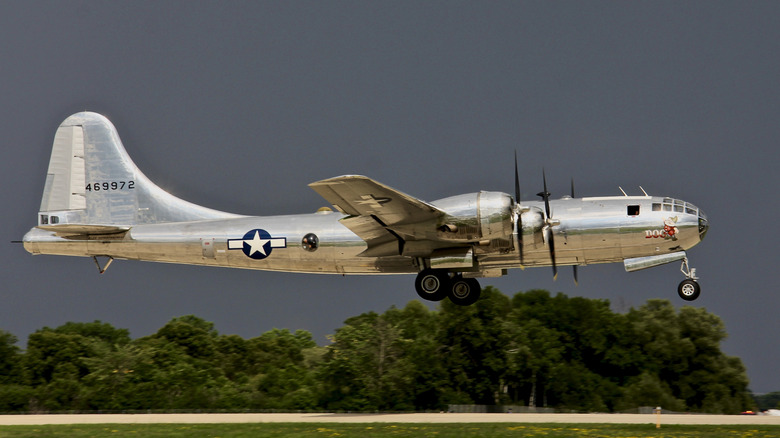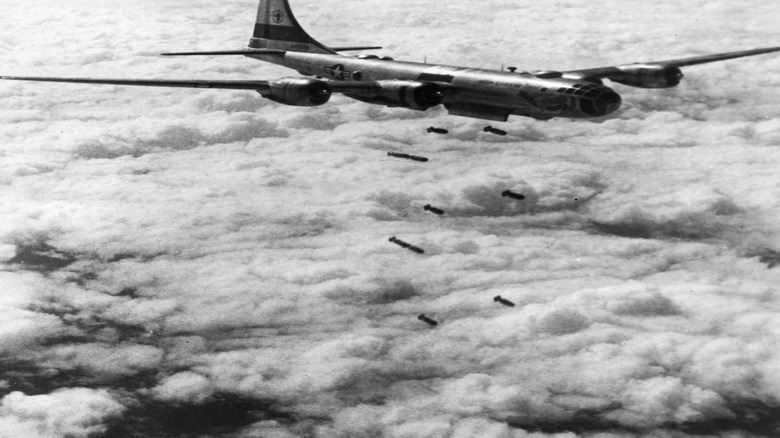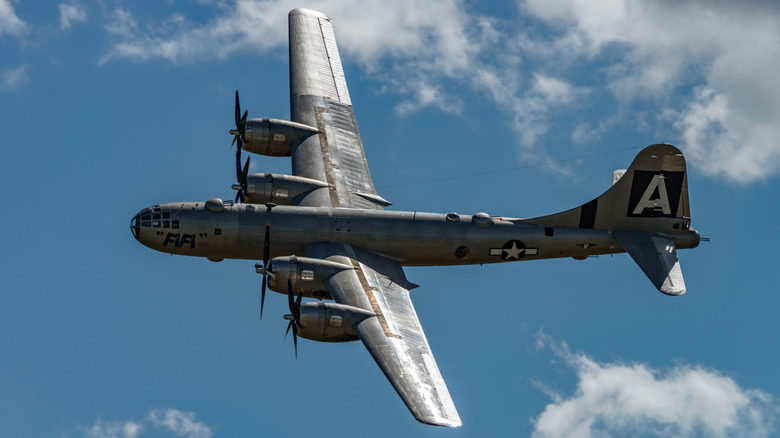How Many B-29 Superfortresses Are Still Flying Today?
When it comes to the military aircraft that have shaped world history, there may be no single airplane model with a greater impact than the Boeing B-29 Superfortress. The B-29 didn't just push the Allies to victory through a relentless strategic bombing campaign over Japan in August of 1945 the Superfortress ushered in a frightening new era of warfare as the aircraft that dropped atomic bombs on the Japanese cities of Hiroshima and Nagasaki.
In that sense, the B-29 simultaneously ended one chapter of American history and began another. The atomic bombings soon pushed the Japanese into unconditional surrender, thus ending the bloodiest war in history, while also demonstrating the power of America's newly developed nuclear arsenal to the Soviet Union for the Cold War that followed.
80 years after the end of World War II, just two B-29s are still flying. Both of them are based in the United States, where they actively tour the country as air show performers and living displays of aviation history.
The bomber that changed warfare
The B-29 was a revolutionary heavy bomber. Its development was one of the most expensive projects in American military history, with a pressurized cabin that allowed it to fly higher and farther than the bombers that came before it. The first B-29 prototype flew in 1942, with its first combat mission coming in November 1944. A total of 3,970 B-29s were built between 1943 and 1946.
Production ended shortly after the war in 1946, with the B-29 eventually leaving service in 1960. The vast majority of the planes would end up being scrapped in the postwar years, and as of this writing, there are just 20 surviving B-29s on public display around the world, most not in flying condition. The history-making Enola Gay, which dropped the atomic bomb in Hiroshima, is on static display at the Smithsonian Air & Space Museum, while the B-29 Bockscar, which dropped the atomic bomb in Nagasaki, is on static display at the National Museum of the United States Air Force.
Then there's Doc and FIFI, two names well known among both World War II history buffs and aviation enthusiasts for being the only two flying B-29 Superfortresses on the planet.
FIFI and Doc
FIFI is the B-29 owned by the Texas-based Commemorative Air Force (CAF). It was first acquired by the CAF in 1971 and began touring the country in 1974. After more than 30 years of touring and air show performances, FIFI underwent a major engine overhaul in 2006, returning to the skies in 2010. FIFI appears regularly at air shows and visits airports across the country, where lucky passengers can purchase a ride.
Doc, the other flying B-29 sat in the California desert until 1998, when it was pulled out and returned to Wichita, Kansas (where it was originally built) to undergo an extensive restoration and return to airworthiness. In 2016, Doc made its first flight and soon began touring the air show circuit and making stops at airports all over America. Thanks to the non-profit group, Doc's Friends, when the plane isn't out flying, it can be found on public display at its own dedicated hangar and museum in Wichita.
In 2017, history was made when Doc joined FIFI at the EAA AirVenture in Oshkosh, Wisconsin. The world's only two remaining B-29s flew in formation together, marking the first time such a thing had happened in more than 50 years. The two B-29s recently reunited at Oshkosh once more to help mark the 80th anniversary of the war's end, again creating a rare and memorable scene with one of the most legendary aircraft of World War II.


